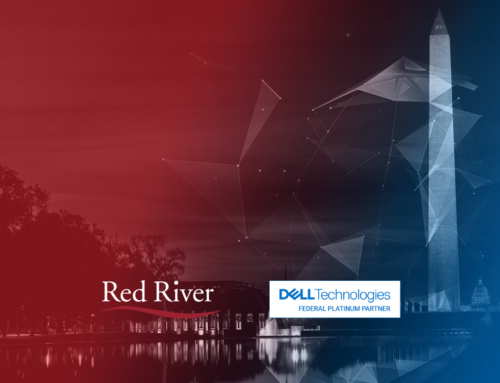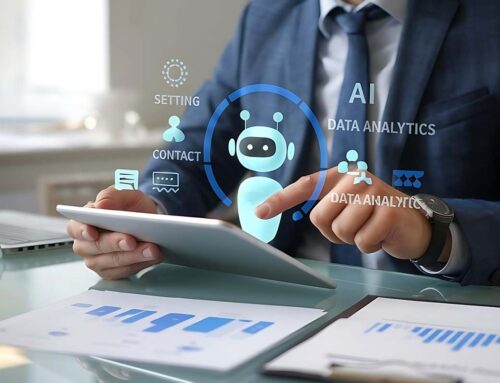
AI Autonomy: How Far Can Self-Directed Systems Go?
Quick Answer:
AI autonomy is the ability of systems to act without human input, ranging from rule-based tools to fully autonomous agents. Modern autonomous AI can manage workflows, make decisions and adapt in real time, which boosts efficiency, reduces costs and enables decision-making thanks to AI for business. While benefits are significant, risks like bias, overreliance and accountability gaps require strong governance. Adaptive, agentic AI is shaping the future of operations across industries.
Want to learn more? Read on!
Artificial intelligence (AI) has long been hypothesized in storytelling, science fiction and even in the lab. In more recent years, what had previously been perceived as futuristic has arrived. With the advent of AI comes many possibilities, as it is no longer hypothetical in nature as it was even a few mere years ago.
It is quickly being discovered that AI can serve many practical uses, including helping IT and business leaders envision potential possibilities for operational transformation. In recent years, AI has been associated with automation and predictive modeling, primarily limited to handling passive support tasks, such as content creation, report generation and chatbots.
Today, the AI landscape looks very different. For example, agentic AI can help systems make decisions, create strategic ideas, take action and manage complex workflows on its own without a high level, if any, human intervention or direct oversight.
While AI is not a catch-all solution, there are many ways agentic AI technologies can help leaders achieve their goals in an efficient manner. In this article, we’ll take a look at AI autonomy, what is realistically achievable with self-directed systems today and where the technology is heading in the future.
What is AI Autonomy?
AI autonomy is this technology’s ability to act independently of human action. This includes actions, such as managing operating systems, making decisions and performing tasks without the need for human oversight or directives. There are several levels of AI autonomy, including rule-based, semi-autonomous and fully autonomous.
Rule-based
Rule-based AI relies upon a set of predetermined “if/then” rules and these systems are designed to operate under strict directives given by humans. They are rigid in how they operate because rule-based AI doesn’t have the ability to learn or adapt to new situations. Many industry systems and diagnostics actively in use today in business environments operate fully within rule-based parameters and, thus, cannot self-learn.
Semi-autonomous
Semi-autonomous AI is able to perform tasks but has a limited level of independent decision-making capabilities; some human intervention and/or oversight is necessary to operate. Critical decisions are typically made by humans, while the machine handles tasks on its own. Many self-driving vehicles are semi-autonomous because they follow “if/then” rules but also have the ability to operate under certain conditions on their own, while possessing a capacity for self-learning. Important to note, self-driving vehicles are built under a subcategory of different levels.
Fully autonomous
Fully autonomous AI is an advanced form of AI that is capable of defining and pursuing goals. It can also make independent decisions without human intervention or guidance. One of the prominent features of fully autonomous AI is that it can evaluate its own performance, self-learn from events and adapt itself where it sees necessary. Some types of self-driving vehicles are fully autonomous (e.g., Waymo taxis). Other examples of fully autonomous AI can include business tools for sales, marketing, customer service and workflows.
What is Agentic AI?
Agentic AI is a subcategory of AI autonomy that entails high levels of autonomy, leveraging it to pursue and complete high-level tasks, such as planning steps and performing goal-oriented decision-making. It can exist at varying degrees of independence, depending on the product and design. Cars, drones, cybersecurity tools, virtual assistants and certain kinds of robots are examples of technologies that can fall under the agentic AI subcategory.
These tools are transforming many industries, including, but not limited to, healthcare, logistics, software development and research. Since they require little to no human oversight, they can enhance operations to make it more productive, efficient, accurate, cost-effective, goal-oriented and collaborative, along with offering insight that might not be detected by humans.
Additional examples of autonomous systems that can boost operations include self-healing IT infrastructure, AI-driven SOC workflows, adaptive cybersecurity and autonomous agents for IT operations. Red River is a technology transformation company and we can help you identify the types of products your business can leverage.
Benefits of AI Autonomy
Modern businesses face increased demands from consumers, B2B partners and other stakeholders, making AI autonomy’s arrival at a good time to help provide much-needed solutions. With an uptick in service demands, cost pressures and other complexities modern companies face, traditional help desks are often overwhelmed because they are limited by staff availability, human errors and response lags.
As a result, organizations find they can enjoy numerous benefits when leveraging adaptive AI, including better efficiency, higher productivity, cost reductions and faster decision-making. Autonomous AI agents can also handle routine tasks such as password resets, employee onboarding, IT incident triage, HR leave requests, employee account management and equipment ordering, freeing up your employees to handle more complex tasks that do require human intervention.
While there are various benefits, it is essential to understand not just the current capabilities but also any gaps or other potentially problematic issues.
Are There Any Risks Associated with AI Autonomy?
As with any technology, there are risks that must be weighed against any advantages before integrating any new system, product or automation. For example, AI technology must have explainability (if it does not, business leaders should further explore this). Aside from a lack of explainability, risks associated with AI autonomy include:
- Establishing over-reliance on AI (e.g., erodes human skills)
- Creating ethical concerns with privacy or outright privacy violations
- Generating amplified bias over time (e.g., bad data is in the primary source)
- Creating accountability gaps
- Setting conditions for the erosion of human skills
Companies also need to be aware of AI systems that pursue objectives that might not align with organizational goals or create harmful, illegal or other unintended consequences. For instance, since AI may not always show how a decision is reached, this can create murkiness within systems that must be transparent for compliance reasons or hide where errors may have been made, further exacerbating a problem.
Practical Use Cases
Practical use cases of autonomous AI are vast since there are an array of options available to businesses to consider for integration into their operations. From the technology ecosystem perspective, practical use cases include:
- Self-healing IT infrastructure
- Automated patching
- AI-driven security response
- Cloud cost optimization
- Autonomous network management
- Decision AI to help create goals, expansions or other primary solutions/options
- Alleviate long wait times and relieve overwhelmed help desk staff
- Reducing operational costs by decreasing live-agent ticket volume
Tools can range from high-level strategic needs to routine execution. Autonomous AI can either replace human tasks or augment them by handling repetitive tasks or flagging anomalies, so humans can review them to see if more intervention is required.
Adoption Roadmap to Autonomous AI
Adopting any new technology should never be taken lightly, as you want to make certain the tech can deliver what you anticipate it will. Since no two organizations have the same exact needs, it is important to take a tailored approach to integrating any autonomous AI. When initiating integration, it can be helpful to:
- Identify opportunities
- Start with low-risk automation
- Use pilot autonomous agents
- Monitor performance
- Evaluate scale
The experts at Red River are equipped to help you with the identification of opportunities and assessing AI readiness through the process to attain installation and use. We can also help your company establish a framework for governance to ensure compliance.
Ways to Manage Autonomous AI

Those using AI to improve operations, fill gaps or for other purposes can take proactive steps to monitor AI while letting it do its job.
- Governance and oversight. This can be accomplished by using human-in-the-loop mechanisms, escalation thresholds and safe adoption practices to build trust. Integrating strong AI governance frameworks will help ensure problems don’t emerge.
- KPIs and success metrics. Business leaders can leverage KPs and success metrics to determine what is working and what isn’t. For example, they can examine MTTR reduction, cost savings, reduced manual intervention and operational uptime.
- Start low-risk. Integrate autonomous AI into low-risk system environments to “test” and determine if it is working as anticipated in these types of workflows and applications.
- Educate and collaborate. Involve everyone in any decision AI processes to help them understand the technology’s capabilities, learn how to collaborate and follow guidelines.
Working with a skilled partner who is well-versed in AI technologies can help your company get established and acclimated to this new approach. Red River’s team of experts can offer seamless integration and deployment, deep help desk expertise, customized managed services, scalable AI enablement and responsible AI governance.
Future Trends
AI has been emerging for some time, but it is now evolving at lightning speed, well beyond theory to reality. Artificial intelligence technologies aren’t a singular or limited lifespan type of technology that will go the way of dial-up modems or VHS did; it’s going to continue to become more mature and powerful as AI attains different levels of maturity and becomes more diversified in an array of use cases.
Future trends will include reinforcement learning, agentic AI, federated learning and self-healing enterprise systems. Autonomous AI agents offer a massive step toward autonomous and collaborative intelligence that is capable of adaptability. Adaptive AI will go a long way toward helping businesses achieve better levels of productivity and efficiency while filling in growing gaps most organizations face in today’s world.
While there are tangible benefits to leveraging agentic AI, this doesn’t mean it comes without risk and other complexities needing to be addressed. To overcome these hurdles, we will need to act thoughtfully and with intention while evaluating said risks. This will help to ensure AI remains in alignment with humanity while helping to fulfill the roles we need.
Now is the Time for Businesses to Evaluate AI Autonomy Use
A recent survey evaluating customer service experiences and interactions with AI agents found that customers value availability and speed. Results found they prefer 24/7 availability (46.76%) and rapid response time (23.23%). It is likely that as more people become more familiar and experienced with using autonomous AI agents, these statistics will increase.
Adaptive IT in the form of AI agents can continuously improve and get “smarter” over time as they interact with users and environments. This means the more they are used, the models are refined, performance is improved and the need to retrain is reduced or even eliminated.
Another primary strategic advantage of agentic AI is that it operates in decision chains, not isolated events, pulling together a comprehensive approach to various tasks. Over the past couple of years, autonomous AI agents have grown by leaps and bounds, and they will only continue to improve. Understanding how decision AI works and integrating it into operations sooner rather than later can also provide a competitive advantage.
Ready to Integrate AI Autonomy and Boost Your Business’s Capabilities? Red River Can Help!
As an expert managed IT service provider for more than 30 years, Red River offers a variety of IT services to businesses of all sizes. We are more than a technology provider; we pride ourselves on being your strategic partner in your technology journey as you seek to integrate AI autonomy into your operations.
It is clear that artificial intelligence is here to stay, and its self-directed competencies will expand. Red River can help you build your company’s AI foundation and help it transition and be prepared for whatever AI capabilities come next as it continues to redefine boundaries of machine autonomy. Not only can we help your business adopt AI, we can help it overcome any potential challenges it encounters along the way.
Are you ready to delve into the possibilities and benefits agentic AI offers? Let’s get the conversation started. Contact Red River today to schedule a consultation and discuss how we can customize AI and other technologies to help your business meet its objectives and establish itself as a competitor in its industry.

written by
Corrin Jones
Corrin Jones is the Director of Digital Demand Generation. With over ten years of experience, she specializes in creating content and executing campaigns to drive growth and revenue. Connect with Corrin on LinkedIn.




